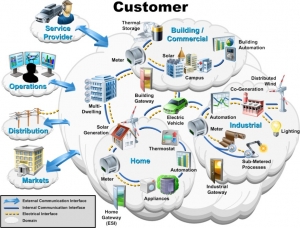The Internet of Things (IOT) is all the rave these days, and with it comes new business offerings for monitoring and management. In our world of industrial automation, the opportunities include asset monitoring (Plant Asset Management (PAM), Asset Lifecycle Management (ALM), Enterprise Asset Management (EAM), Asset Performance Monitoring (APM) and Condition Based Monitoring (CBM)). All of these require connectivity to remote assets (the Internet of Things), analytics and reporting. A reporting solution, with an integrated web portal is ideal for delivering asset intelligence to the asset owners.
More and more, we are seeing both equipment manufacturers (OEMs) and solution providers (System Integrators – SIs), look to deliver remote monitoring services to improve the reliability of remote assets and increase their performance, not to mention the obvious validation of an asset warranty and assisting asset owners with the operation of their processes. When some assets are valued in the millions of dollars, like a Power Generation Turbine, remote monitoring by the manufacturer is a given to maintain its warranty.

Providing operational information to the asset owner is critical in the ongoing value proposition. For the service provider, doing so easily, with as much delivered value as possible, and with minimal ongoing maintenance is crucial. An automated reporting solution, such as Dream Report, is ideal for the following reasons.
Benefits Important to Reporting as a Service (RAAS):
- Connectivity to Field Data – That data may be directly from field devices as is the case with proprietary protocols to equipment, or it may be to repositories (Relational Databases or Data Historians). In either case, Dream Report offers a rich set of data connectors (Drivers) to remote information. Your options are to use its standard set of drivers, or leverage the support for standards such as OPC, and third party interfaces. In either case, Dream Report offers a broader set of connectivity than any other reporting solution on the market.
- Powerful Analytics – You’ll want to compare operational data from batch to batch, time to time, occurrence to occurrence. Dream Report will do that for you, through its vast set of data handling and statistics features.
- Data Formatting – You’ll want to format that data for human presentation. You’ll want to make it pretty. You’ll want to make it relevant. Most important, you’ll want to make it valuable – delivering the operational intelligence your customers expect. The formatting of data is key to presenting information in a way that is instantly understandable and actionable. That is a key aspect of Dream Report.
- Report Delivery – How will your customers consume the information? Options abound in Dream Report. Reports can be emailed, stored online (FTP delivery), printed and/or hosted on a customer web portal.
- Interactive Reporting – Most important, and uncharacteristically of report generators, reports should be interactive. Customers will want to re-generate a report over different periods, batches, data sets, etc. Customers will want to select alternate variables (assets) for reporting and analysis. Customers will want to filter and sort tables and zoom and pan trends. These are all benefits of Dream Report and its web portal.
Features Required for Reporting as a Service (RAAS):

- Segregation of Data – Assets need to be managed separately. Communications to data sources should allow separation by Asset and by Customer.
- Reports as Templates – Reports should be standardized, and abstracted from data sources. Modifications to a standard Asset Report, should apply across the board to all Asset owners, but at the same time, customizations for a particular installation should be easy to create and maintain.
- Fast and Easy Deployment – Updates to the Reporting as a Service solution need to fast and easy to minimize remote customer impact. Report Development should be separate from run-time operation and updates need to be made remotely, and preferably through an automated process such as a deployment tool.
- Security – Who has access to what? Reports need to be secured to the Assets and Customers that own them.
- Web Portal – A secure web portal will display the reports that a customer has access to, with the features (Read-Only, Read/Write, etc.) that is defined by the service provider.
- Mobile Ready – Web Portals must support a wide range of devices. These include all brands of browser, Internet Explorer, Firefox, Google Chrome, and Safari, among others. In addition, Web Portals must support a variety of devices; PCs, Tablets, Smart Phones, and be tollarant of different operating systems; Windows, MAC, iOS, or Android for example.
Dream Report delivers all this and more. It is the ideal platform for a Software as a Service (SAAS) or Reporting as a Service (RAAS) Remote Asset Management solution. Contact us to learn more.

